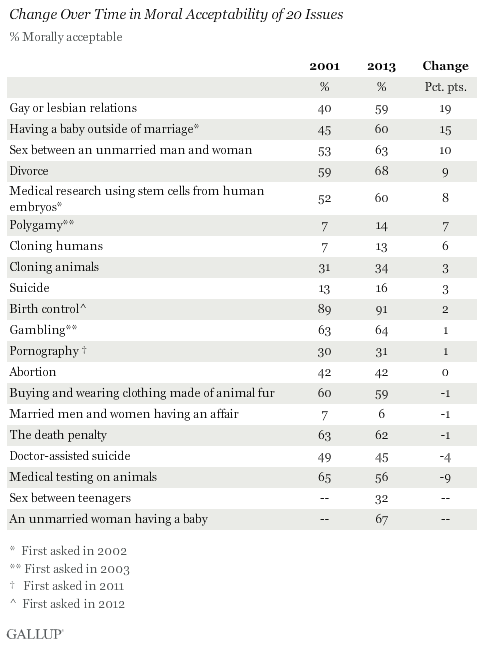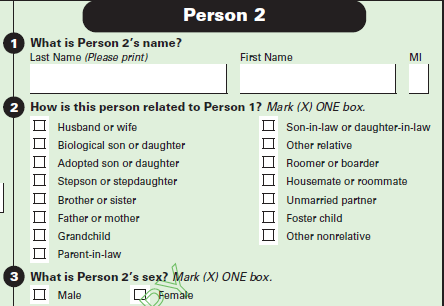
Specifically, Facebook defines these variables as interests and behaviors [ 24 ]. While it is feasible to use both interests and behaviors to assess population size, this study used interests. Specifically, the following keywords were used to identify same-sex interests: Identified same-sex interests were subsequently assigned to one of eight thematic groups, representing men who have expressed an interest in or liked pages related to at least one included same-sex interest Multimedia Appendix 4.
Only same-sex interests endorsed by at least , Facebook users across all of Facebook were included in the analysis. No ads were created. During the process of planning advertisements, the Facebook Ads Manager interface displays an estimated number of users in the geographic area with those interests.
Recent UNAIDS and national estimates are less than those reported by active Hornet app users in Brazil, Thailand, and Ukraine, with differences in estimates of 1,,, ,, and 66,, respectively. Gay, bisexual, and other cisgender men who have sex with men. The proportion of men reporting a same-sex interest within the category of Relationships ranged from 1. Distribution of Facebook-identified same-sex interests by country.
The proportion of males aged years reporting same-sex interests ranged from 4. Although there are several limitations to our approach, there is a clear signal towards higher estimates of GBMSM when digital approaches are utilized. While several studies have focused on the role dating apps and websites play in risk-taking behaviors among GBMSM [ 25 ], only recently has there been interest in leveraging apps to serve the HIV prevention, treatment, and care needs among GBMSM.
Our data suggest that same-sex dating apps and social media networks are promising data sources for designing population estimates and programmatic targets for GBMSM. The usage of the Internet is becoming increasingly normalized throughout the world, and this trend will only continue. Empirical and market-research data, generally derived from higher income settings, demonstrate that GBMSM are high utilizers of the Internet, often using the Internet to find partners, given limited venues and significant social stigma [ 26 - 30 ].
This trend towards online spaces has largely been attributed to stigma that same-sex behaviors face and the confidentiality that is afforded in online spaces [ 32 - 34 ], which enable users to more accurately report their attraction or in some instances, trace their behavior and eliminate biases in self-reported data.
Although these studies were predominantly completed in higher income settings, similar results have been observed among GBMSM in Southern Africa and Nigeria [ 35 , 36 ]. Given the significant usage of the Internet, online spaces likely represent an important approach for collecting same-sex attraction and behavioral data, especially in more stigmatizing settings.
However, most men have their first sexual encounters with other men before the age of 18, and HIV incidence has been shown to be high among young GBMSM across settings [ 38 , 39 ]. Moreover, men under the age of 18 are generally not included in surveys or HIV prevention, treatment, and care programs, given the challenges in achieving consent [ 40 ].
Given that younger GBMSM are more likely to leverage virtual spaces, as evidenced by these data, the use of digital data for size estimation represents a strategy to inform the numbers and HIV prevention, treatment, and care needs of young GBMSM [ 41 ]. While the legal challenges of consent remain, especially in settings where same-sex practices are criminalized, there is a clear need to scale up evidence-based and human rights-affirming HIV prevention strategies for younger GBMSM, including condoms, lubricants, and preexposure prophylaxis PrEP.
There are several limitations in the methods and results presented here. Moreover, the extent of specificity is likely subject to specific cultural contexts, thereby leading to overestimating the numbers of GBMSM with this metric. The metric used for Hornet was unique users with only one account allowed per device.
While it is feasible to create multiple accounts on Facebook with unique email addresses, this likely represents a very low proportion of users. Although Internet usage is increasing rapidly, there is less access in many lower- and middle-income countries, which may underestimate the numbers of GBMSM. However, Internet access around the world continues to increase, especially due to the rapid increase in affordable smartphones, suggesting that the utility of social media-based estimates of population size will increase over time. Moreover, some of the respondents captured online in low- and middle-income countries may be expatriates rather than GBMSM from that country.
The contribution of expatriates to these estimates is considered to be low, given the limited number of expatriates, and only people who noted the country as their country of residence were included.
Demographics of sexual orientation - Wikipedia
Additional research studying appropriate search strategies according to each social media platform, including large platforms not studied in these analyses, are required. Building collaborations with social media platforms may also facilitate improved estimates of population size along with insights into appropriate strategies to deliver interventions that leverage these platforms. Taken together, these data clearly suggest a significant discrepancy between size estimates of GBMSM reported by normative agencies and estimates from digital sources.
Over four decades of the HIV pandemic, GBMSM have been well known to bear a disproportionate burden of HIV due to the biology of the virus, which is compounded by criminalization, intersectional stigma, discrimination, and violence. Deriving estimates of the numbers of people at risk of acquiring and living with HIV is complex, and other studies have highlighted these challenges for other populations. Developing common methods of counting GBMSM, especially the use of central data collection with consistent approaches, provides an additional data source that is directly comparable across settings.
Although these additional approaches have biases, they are complementary to the biases of existing methods. The approach presented here that leverages social media is imperfect, but is relatively low cost to implement and provides comparable estimates across a large range of countries, including some with no extant estimates. Triangulating multiple data sources including social media may facilitate optimal estimations of the numbers of GBMSM for program planning, evaluation, and estimates of HIV epidemic dynamics.
These methods also allow for the estimation of numbers of GBMSM in settings where stigma and risks of violence are too great to even report in this paper [ 44 ]. The practice of pointing to no data in this instance nonexistent GBMSM size estimates to justify not funding or grossly underresourcing programs for GBMSM has long been identified by advocates, and should be challenged.
Not doing so runs the risk of having evidence-based and human rights-affirming programs that address specific needs of GBMSM disappear.
Site Information Navigation
Ultimately, we cannot overstate the importance of understanding the characteristics and numbers of those most affected by HIV to truly achieve an AIDS-free generation. The funders had no role in study design, data collection and analyses, decision to publish, or preparation of the manuscript.
Distribution of Facebook identified same-sex interests by country — expanded Table 2. Conflicts of Interest: All other authors declare no conflicts of interest.
National Center for Biotechnology Information , U. Published online Feb 8. Reviewed by Teymur Noori and Elizabeth Fearon.
Demographics of sexual orientation
Author information Article notes Copyright and License information Disclaimer. Corresponding author. Corresponding Author: Stefan Baral ude. This is an open-access article distributed under the terms of the Creative Commons Attribution License https: The complete bibliographic information, a link to the original publication on http: This article has been cited by other articles in PMC. Objective This study leverages estimates of the number of members of a social app geared towards gay men Hornet and members of Facebook using self-reported relationship interests in men, men and women, and those with at least one reported same-sex interest.
Though it was formerly a bar, it has been totally stripped, renovated, and recreated as a completely new and classic space. The venue has two floors, tremendously plush, comfortable, and inviting appointments including extensive seating, sumptuous marble bars, hardwood floors, a sidewalk patio with misters to keep you cool in the DC summer, and state of the art sound and lighting. We have proudly assembled a fun and friendly group of skilled, mature, and professional people who will make every experience at Number Nine pleasant, attitude free, and memorable for all the right reasons.
While we offer an extensive menu of classic cocktails, we also provide an appetizing array of flavoring ingredients and fresh fruit that will allow you to create your own drink to your own taste or allow us to do it for you. We have planned and organized Number Nine for your convenience:. We have made it simple - so that you can think about things that matter - and trust that your down time with us is easy to enjoy without having to figure it out.
The LGBT percentage has risen among all race and ethnic groups since , although not on an equal basis. Hispanics and Asians have seen the greatest increase, thus contributing the most on a relative basis to the uptick in LGBT identification nationwide. Whites and blacks have seen the least change.
- Introducing Number Nine.
- free gay dating site without payment;
- gay dating games;
- A record 4.5 percent of U.S. adults identify as LGBT, Gallup estimates.
- LGBT Adoption Statistics.
- Recommended.
- california male gay escort;
The relative rank order of the LGBT percentages among these four race and ethnic groups has remained roughly the same over the last several years. LGBT identification among blacks and Asians, 4. LGBT identification is more common among those with lower incomes, as has been the case consistently since The income gap is larger this year than it has been, with 6. There are no major differences in LGBT identification by educational attainment, although the percentage of postgraduates who self-reported as LGBT is slightly lower than those with less formal education.
This update on LGBT identification underscores two significant conclusions. First, the percentage of adults in the U.
Second, the increase has been driven almost totally by millennials, whose self-reports of being LGBT have risen from 5. Gary Gates noted in his report on Gallup data last year: These can include how comfortable and confident survey respondents feel about the confidentiality and privacy of data collected. Self-identification as LGBT is only one of a number of ways of measuring sexual and gender orientation. The general grouping of these four orientations lesbian, gay, bisexual and transgender into one question involves significant simplification, and other measurement techniques which ask about each of these categories individually yield different estimates.
Additionally, self-identification of sexual orientation can be distinct from other measures which tap into sexual behavior or attraction. The value of the Gallup data is the use of a constant question wording over time and the largest yearly sample sizes of any effort to measure sexual and gender orientation in the U.
 Number for gay
Number for gay
 Number for gay
Number for gay
 Number for gay
Number for gay
 Number for gay
Number for gay
 Number for gay
Number for gay
 Number for gay
Number for gay
 Number for gay
Number for gay
Related number for gay
Copyright 2020 - All Right Reserved